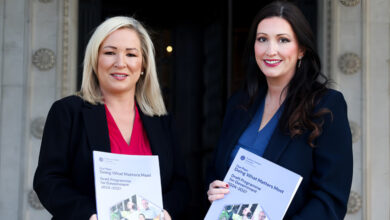Bonds are back on public sector agenda
 The combination of government spending cuts and changes in the banking sector’s ability to offer long-term debt, in the way it has in the past, has led to the subject of bond issuances reappearing on UK public sector agendas in the UK for the first time in nearly two decades.
The combination of government spending cuts and changes in the banking sector’s ability to offer long-term debt, in the way it has in the past, has led to the subject of bond issuances reappearing on UK public sector agendas in the UK for the first time in nearly two decades.
De Montfort University has helped fast-track many of these conversations bringing this topic to the fore after it was awarded a rating by Moody’s (Aa1) and successfully issued a £110 million public bond, leaving its Vice Chancellor besieged by calls from other universities eager to understand what the process involved. This was the first public bond to be issued by a British or Irish university since 1998 and following its success, raising long-term funding in the public markets is likely to develop and become a credible alternative for public sector organisations once again.
The Debt capital markets will be right for some public sector organisations but not for all, so finance teams would be wise to continue to invest time understanding how the bond markets might work for them. We have already spent a considerable amount of time helping public sector organisations up and down in the UK and Ireland understand how to access the debt capital markets, and we fully expect these conversations to gather pace in the wake of De Montfort. Helping the public sector engage with the credit rating agencies is often a useful first step as they try and get more focused on the options open to them.
For many public sector organisations in Northern Ireland, a bond would be the first time they have taken on a large amount of external debt and, therefore, the implications, costs and benefits need to be carefully considered. However, the credit profile of the UK’s local authorities and universities, together with investor appetite for high quality, long dated bonds, means that at the appropriate time public sector organisations willing and able to diversify their sources of funding can expect to find the bond markets offering a very credible pool of liquidity. This could be on their own or as part of a collection of public sector organisations looking to issue a bond together to address their funding needs. Generally speaking, organisations need to be seeking £150 million or more (either on a single named or collective basis) to make a public bond viable, otherwise a private placement is likely to be the more suitable option. De Montfort also utilised the concept of retained bonds, whereby they sold £90 million of the bonds to the public market and are still holding the remaining £20 million. This allows them to sell these bonds more easily into the public market at a later date should they need the additional liquidity.
All this means that public sector organisations have plenty to consider and evaluate in relation to their potential sources of funding going forward.
Graeme MacLaughlin, Relationship Director of Corporate Banking at Barclays in Belfast, can be contacted on 028 90 882929 or email graeme.maclaughlin@barclays.com
Barclays is the trading name of Barclays Bank PLC and its subsidiaries. Barclays Bank PLC is registered in England and authorised and regulated by the Financial Services Authority (FSA No. 122702). Registered Number is 1026167 and its registered office 1 Churchill Place, London E14 5HP





